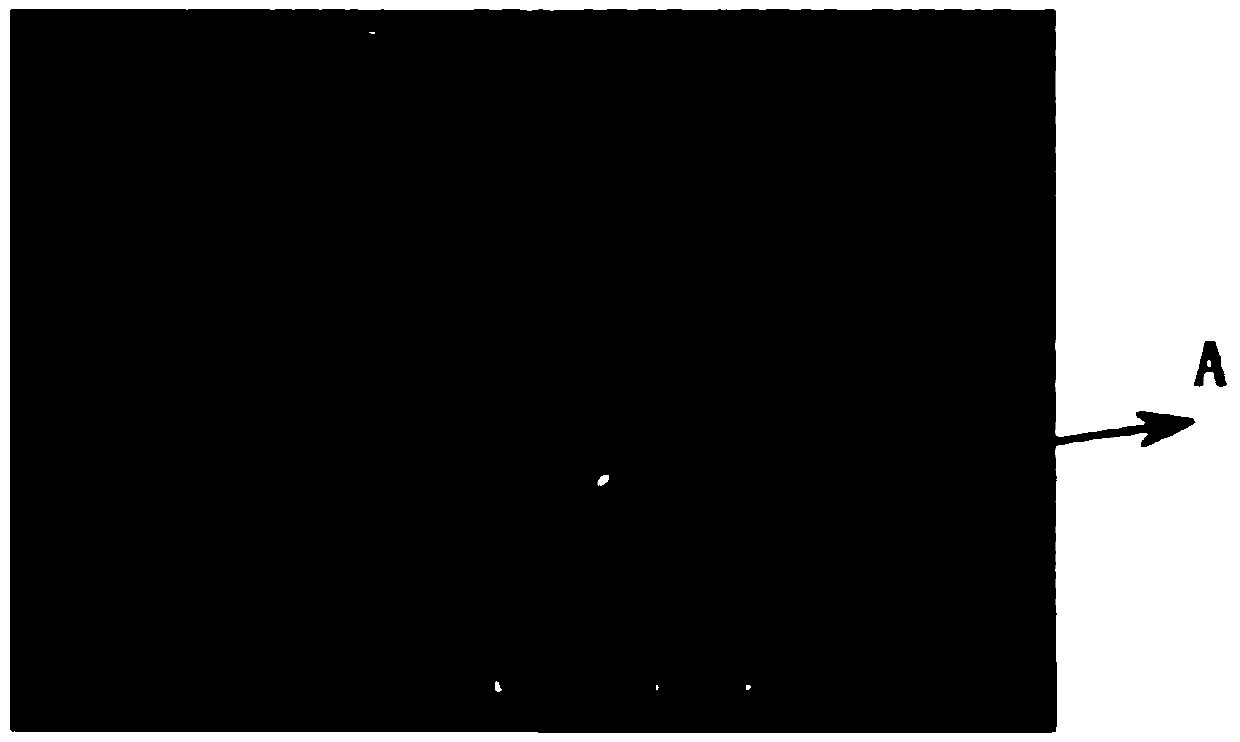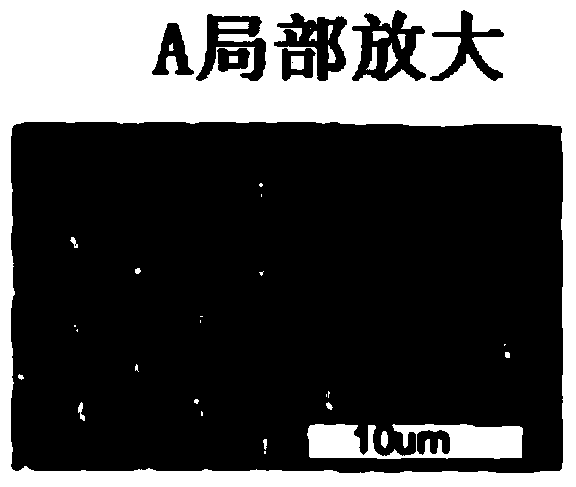Polyaniline pincushion array film having electric field responding hydrophilic/hydrophobic change and preparation method thereof
A polyaniline needle and electric field response technology, applied in the field of conductive polymer conductive materials, can solve the problems of complex technical process and high production cost, and achieve the effects of uniform film formation, improved adhesion, and increased surface roughness
- Summary
- Abstract
- Description
- Claims
- Application Information
AI Technical Summary
Problems solved by technology
Method used
Image
Examples
preparation example Construction
[0029] refer to Figure 1-Figure 3 , the preparation method of the polyaniline needle pad array film with electric field response to hydrophilic and hydrophobic changes of the present invention comprises the following preparation steps:
[0030] 1) Preparation of polystyrene ordered pin-cushion membrane template
[0031] At room temperature, 30 mL of the chloroform solution of polystyrene and polydodecyl acrylamide-6-aminocaproic acid was placed in a petri dish. The concentration of polystyrene in the mixed solution was controlled at 1-5 g / L, and the poly The concentration of dialkylacrylamide-6-aminocaproic acid is about 1 / 10 of that of polystyrene, and a humid air stream with a relative humidity in the range of 30-80% is continuously blown above the mixed solution at a speed of 4L / min. A layer of opaque cellular ordered porous membrane is formed on the surface rapidly. After 15-20 minutes, after the solvent is completely volatilized, the surface of the cellular ordered poro...
Embodiment 1
[0038] Preparation of polyurethane (PU) needle pad array matrix: The pores of the polystyrene (PS) ordered needle pad film were filled with 20 g / L water-soluble polymer polyvinyl alcohol (PVA) aqueous solution, and the film was placed in 50 mL after the water was completely evaporated. In the chloroform solution, polystyrene (PS) was dissolved to obtain a chloroform-insoluble polyvinyl alcohol (PVA) reverse pin pad array film. 35g / L of polyurethane (PU)-dissolved tetrahydrofuran (THF) solution was filled into the polyvinyl alcohol (PVA) reverse pin pad array film, and after the chloroform organic solvent was completely evaporated, the film was immersed in deionized water, and polyvinyl alcohol (PVA) was used. PVA) was dissolved to obtain a water-insoluble polyurethane (PU) pin pad array film substrate.
Embodiment 2
[0040] Preparation of polyurethane (PU) needle pad array matrix: The pores of the polystyrene (PS) ordered needle pad film were filled with 20 g / L water-soluble polymer polyvinylpyrrolidone (PVP) aqueous solution, and the film was placed in 50 mL after the water was completely evaporated. In the acetone solution, polystyrene (PS) was dissolved to obtain an acetone-insoluble polyvinylpyrrolidone (PVP) reverse pin pad array film. 35 g / L of polyurethane (PU)-dissolved tetrahydrofuran (THF) solution was filled into the polyvinyl alcohol (PVA) reverse needle pad array film, and the film was immersed in deionized water after the acetone organic solvent was completely evaporated, and polyvinylpyrrolidone ( PVP) was dissolved to obtain a water-insoluble polyurethane (PU) pin pad array film substrate.
PUM
 Login to View More
Login to View More Abstract
Description
Claims
Application Information
 Login to View More
Login to View More - R&D
- Intellectual Property
- Life Sciences
- Materials
- Tech Scout
- Unparalleled Data Quality
- Higher Quality Content
- 60% Fewer Hallucinations
Browse by: Latest US Patents, China's latest patents, Technical Efficacy Thesaurus, Application Domain, Technology Topic, Popular Technical Reports.
© 2025 PatSnap. All rights reserved.Legal|Privacy policy|Modern Slavery Act Transparency Statement|Sitemap|About US| Contact US: help@patsnap.com



